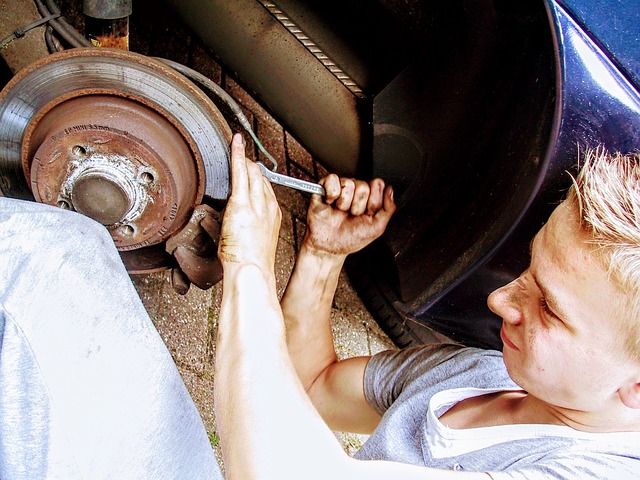Structural stem wall reinforcement is a critical aspect of residential foundation repair, addressing weaknesses that lead to cracks, shifts, and collapses. Advanced materials like steel bracing, concrete bolstering, and carbon fiber wraps strengthen stem walls against damage from poor soil, moisture, and aging structures. These techniques enhance load-bearing capacity, ensuring home stability and saving homeowners costly repairs. Modern reinforcement methods, such as carbon fiber wraps, offer lighter, more efficient alternatives to traditional approaches, reducing costs and construction time. Steel beams and plates provide durable solutions for specific loading needs, maintaining structural integrity over time and protecting homes from environmental factors.
“Uncover the secrets to fortifying your home’s foundation with structural stem wall reinforcement—a crucial aspect of residential foundation repair. This comprehensive guide explores the intricate world of enhancing foundation stability, addressing common issues like damage from shifting soil and settling.
From understanding the fundamental role of stem walls to comparing traditional and modern reinforcement techniques, we delve into effective materials and methods. Discover how these innovations offer long-term benefits and cost savings, ensuring your home’s structural integrity for years to come.”
Understanding Structural Stem Wall Reinforcement

Structural stem wall reinforcement is a critical aspect of residential foundation repair and stabilization. Stem walls, which support the load bearing capacity of a home’s foundation, are often vulnerable to settling, shifting, or damage due to various factors like poor soil conditions, excessive moisture, or aging structures. Reinforcing these walls involves strengthening them to withstand environmental stresses and ensure the long-term structural integrity of the building.
This process typically includes utilizing advanced materials and techniques such as steel bracing, concrete bolstering, or carbon fiber wraps to enhance the stem wall’s load-bearing capacity and stability. By implementing these reinforcement strategies, residential foundation repair professionals can mitigate potential issues, prevent further damage, and ensure a safe and secure living environment for homeowners.
Common Causes of Residential Foundation Damage

Residential foundation damage is a common concern for homeowners, often requiring costly repairs. Several factors contribute to this issue, with some of the most prevalent causes stemming from structural weaknesses and environmental influences. One of the primary culprits is poor initial construction, where subpar materials or shoddy workmanship can lead to cracks and instability over time. These may include inadequate foundation bolting, improper concrete mixing, or incorrect grading around the house.
Another significant cause is soil erosion and settlement, particularly in areas with high water tables or expansive clay soils. The weight of the structure can cause the ground beneath to shift, leading to uneven settling and potential damage to the foundation. Extreme weather events, such as heavy rainfall or earthquakes, can also exert immense pressure on foundations, resulting in cracks or even partial collapses. Timely residential foundation repair is crucial to mitigate these issues and ensure the structural integrity of a home.
The Role of Stem Walls in Foundation Stability

Stem walls play a critical role in ensuring the stability and integrity of residential foundations. These vertical structural elements, often found in homes built on uneven terrain or in areas prone to soil movement, serve as a crucial line of defense against foundation failure. By reinforcing these stem walls, homeowners can mitigate potential issues associated with residential foundation repair, such as cracks, shifts, and even collapse.
In many cases, stem wall reinforcement involves using advanced materials and techniques to enhance their load-bearing capacity. This proactive approach is particularly important for older homes or those constructed on soft soil, where the weight of the structure and varying ground conditions can exert significant pressure on the foundation. By reinforcing stem walls, homeowners can ensure their homes remain stable, protecting both the building itself and its occupants from costly and disruptive foundation damage.
Traditional vs. Modern Reinforcement Techniques

In the realm of residential foundation repair, the evolution of reinforcement techniques has brought about a significant shift from traditional to modern methods. Historically, stem wall reinforcement relied heavily on conventional approaches like steel braces and concrete bolsters, which, while effective, often required extensive demolition and labor-intensive installations. These traditional techniques could lead to lengthy construction periods and higher costs for homeowners seeking residential foundation repair.
Modern reinforcement techniques, however, offer a game-changer in the industry. Advanced materials such as carbon fiber wraps and polymer-based composites have revolutionized stem wall strengthening. These innovative solutions provide superior strength-to-weight ratios, allowing for more discreet and efficient repairs. Compared to traditional methods, modern techniques often involve less demolition, reduce construction time, and minimize costs, making residential foundation repair more accessible and cost-effective for property owners.
Materials and Methods for Effective Reinforcement

When it comes to structural stem wall reinforcement for residential foundation repair, the choice of materials and methods is pivotal. Steel beams and plates are often employed due to their superior strength-to-weight ratio, making them ideal for enhancing the load-bearing capacity of stem walls. These materials can be easily customized to fit specific dimensions and loading requirements, ensuring a tailored solution for each unique situation.
The reinforcement process typically involves strategically placing these steel elements within the wall’s structure. Methods such as welding or bolting are used to secure the steel beams to the existing concrete or masonry, creating a robust composite system. This not only fortifies the stem wall but also provides a durable and long-lasting solution for residential foundation repair, enhancing the structural integrity of the entire building.
Long-Term Benefits and Cost Savings of Reinforcement

The long-term benefits of structural stem wall reinforcement are significant, especially for residential foundation repair and stability. By reinforcing these critical components, homes become more resilient to various environmental factors like severe weather, earthquakes, and settling soils. This longevity translates into a reduced need for frequent repairs, saving homeowners substantial costs over time.
Reinforcement techniques not only enhance the structural integrity of the foundation but also provide peace of mind. Well-maintained stem walls prevent costly damage to the entire structure, ensuring that homes remain safe and stable for years to come. In the realm of residential foundation repair, these benefits are invaluable, making reinforcement a smart investment.
